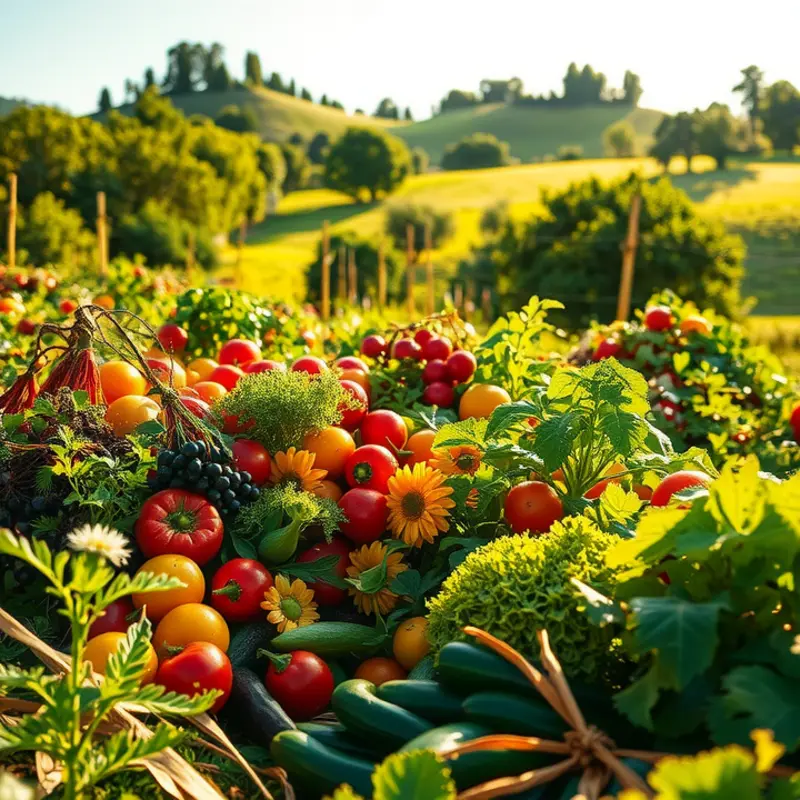Desserts are more than mere sweet endings to meals; they embody cultural significance, convey emotions, and signal celebrations. Across continents, desserts take on roles that reflect the history, geography, and traditions of communities. From the lavish wedding cakes of Europe to the delicate mochi of Japan, the variety and meaning behind desserts are as rich as the flavors they offer. This exploration invites enthusiasts to dive into the stories, rituals, and symbolism that desserts carry globally.
Dessert as Cultural Identity

Desserts play a pivotal role in defining cultural identity, often encapsulating heritage and tradition within their sweet indulgence. Rice pudding in Latin America serves as a poignant example. Infused with cinnamon and vanilla, this comforting dessert is more than just a treat; it symbolizes warmth and familial bonds. Homemade variations reflect personal tastes and regional influences, showcasing the diverse tapestry of Latin American culture.
Rice pudding is typically shared during family gatherings, embedding a sense of belonging. Its preparation requires patience; rice grains simmer slowly, melding with milk and sugar, embodying the hearth of home life. When served, the warm, creamy texture offers a taste of nostalgia, connecting generations through a shared culinary experience.
Persian pastries, with their intricate designs, tell stories of history and artistry. These confections, shaped like delicate flowers or adorned with vibrant pistachio or pomegranate seeds, are crafted with precision. Ingredients such as rose water and saffron lend exotic fragrances, elevating each bite into a sensory journey.
These pastries are essential during celebrations like Nowruz, the Persian New Year. Serving them represents hospitality, prosperity, and a deep reverence for tradition. Bakers undertake the painstaking task of shaping and decorating each pastry, intertwining aesthetic beauty with cultural symbolism.
Preparation methods further anchor desserts in cultural narratives. For example, the communal process of crafting certain sweets engages entire communities. In some Eastern European traditions, honey cakes are prepared during festive occasions through collective family efforts, embodying unity. The rich layers of honey symbolize the hope for a sweet and prosperous future.
Desserts often adapt to the available local ingredients, enhancing their distinctiveness. This connection to geography is significant in establishing authenticity and pride. The use of coconut in tropical desserts or almonds in Mediterranean delicacies reflects natural resourcefulness and creativity.
Such practices ensure that sweets act as cultural vessels, bridging past and present. Shared during weddings, festivals, and rites of passage, these treats help maintain continuity and cultural identity. They become nostalgic reminders of home and heritage for those living away from their place of origin.
The role of desserts in cultural identity illustrates how food can be a powerful connector. Through unique ingredients, meticulous preparations, and artistic presentations, desserts preserve the stories and values of diverse communities. Exploring these cultural nuances enriches our understanding of global culinary heritage, offering insight beyond the sweetness. For further exploration of culinary influences, visit this article.
Desserts in Celebration and Ritual

Desserts are often synonymous with celebration, playing an integral role in marking special moments and fostering community connections. Each culture embraces unique desserts, weaving them into the fabric of their traditions and rituals. In France, the unveiling of the galette des rois during Epiphany is a moment steeped in excitement. This pastry, often filled with almond cream, conceals a hidden charm, bestowing the title of “king” or “queen” upon its finder. This tradition not only delights but also reinforces bonds, inviting families and friends to share more than just a meal.
Across Asia, the Mid-Autumn Festival is heralded by the sharing of mooncakes. These round pastries symbolize unity and completeness, reflecting the full moon’s shape. Filled with sweet or savory ingredients, mooncakes are given as tokens of admiration and good wishes. The act of giving and receiving serves as a powerful reminder of familial ties and the continuity of heritage.
In many cultures, desserts encapsulate collective dreams and aspirations. For instance, in Mexico, Rosca de Reyes is another tradition drawing families together. This sweet, ring-shaped bread is decorated with dried fruits and contains small figures, much like the French tradition. Finding a figure symbolizes good fortune in the coming year, ensuring the practice persists as both a culinary delight and a harbinger of hope.
Desserts extend beyond mere consumption; they are sensory stories that evoke nostalgia and create lasting memories. They embody not just flavor, but also the essence of togetherness. In the United States, pies are a cornerstone of Thanksgiving celebrations, each slice carrying the warmth of seasonal spices and familial love. Sharing pie becomes a way to express gratitude and strengthen family bonds.
The cultural importance of desserts transcends borders, communicating joy and preserving memories across generations. They serve as tangible symbols of love and celebration, and through them, we can explore the rich tapestry of global cuisine and food culture. For a deeper dive into how trade and cultural exchanges have influenced desserts globally, explore this detailed exploration.
Desserts immortalize moments of happiness, acting as sweet tokens of our collective past. They are traditional yet ever-evolving, reminding us that even as customs shift, the core of celebration—community and joy—remains steadfast.
Final words
Desserts serve as a meaningful thread in the tapestry of global cultures, embodying heritage and joy in every sweet bite. They allow us to celebrate our roots and forge new memories, bringing people together in times of joy and reflection. As we continue to explore unique desserts from different cultures, we uncover stories that enrich our understanding of humanity, cultivate appreciation for diversity, and celebrate the universal joy of sweetness. Ultimately, every dessert tells a tale—one flavor at a time.








